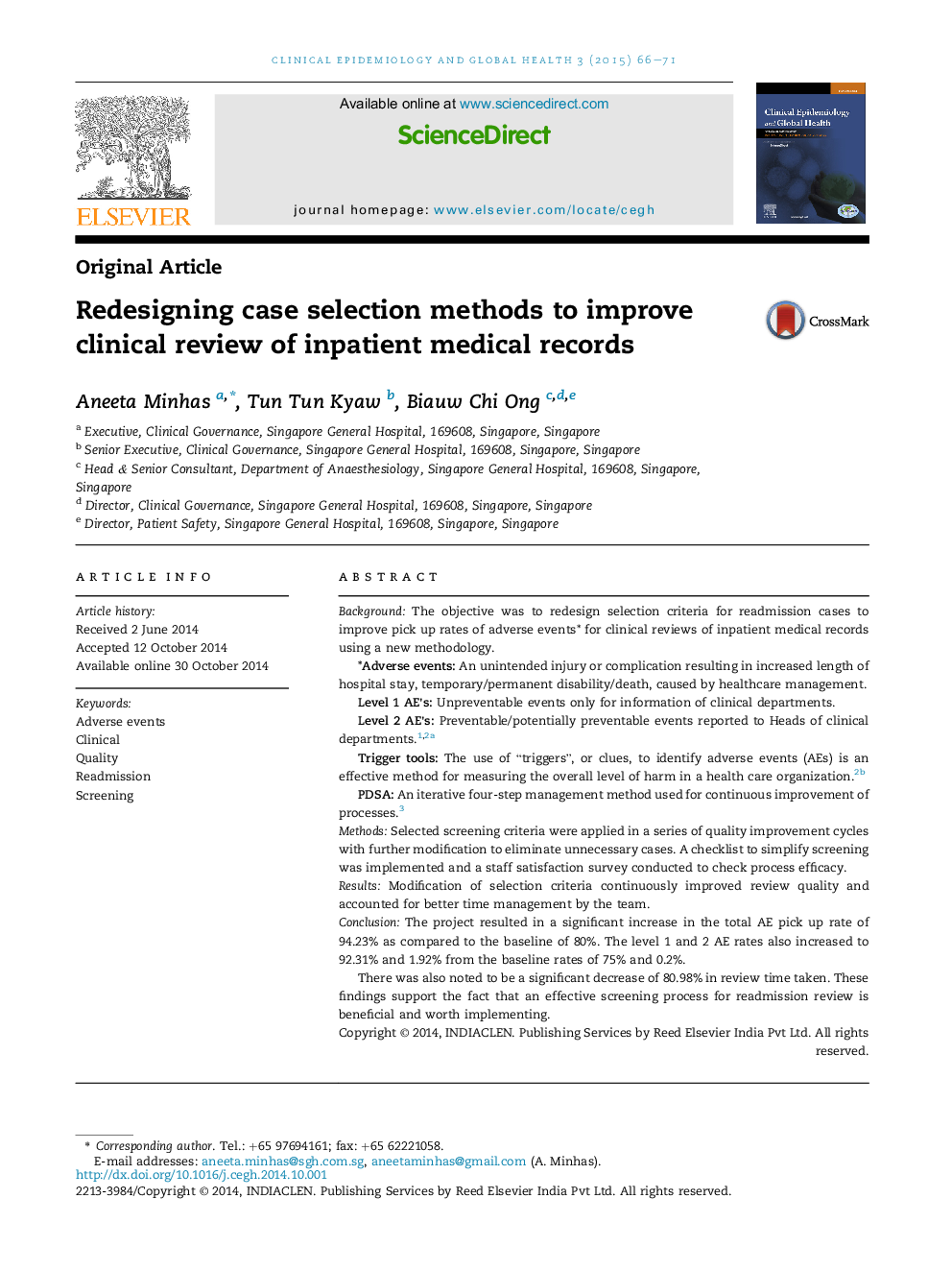| Article ID | Journal | Published Year | Pages | File Type |
|---|---|---|---|---|
| 3396245 | Clinical Epidemiology and Global Health | 2015 | 6 Pages |
BackgroundThe objective was to redesign selection criteria for readmission cases to improve pick up rates of adverse events* for clinical reviews of inpatient medical records using a new methodology.*Adverse events: An unintended injury or complication resulting in increased length of hospital stay, temporary/permanent disability/death, caused by healthcare management.Level 1 AE's: Unpreventable events only for information of clinical departments.Level 2 AE's: Preventable/potentially preventable events reported to Heads of clinical departments.1,2aTrigger tools: The use of “triggers”, or clues, to identify adverse events (AEs) is an effective method for measuring the overall level of harm in a health care organization.2bPDSA: An iterative four-step management method used for continuous improvement of processes.3MethodsSelected screening criteria were applied in a series of quality improvement cycles with further modification to eliminate unnecessary cases. A checklist to simplify screening was implemented and a staff satisfaction survey conducted to check process efficacy.ResultsModification of selection criteria continuously improved review quality and accounted for better time management by the team.ConclusionThe project resulted in a significant increase in the total AE pick up rate of 94.23% as compared to the baseline of 80%. The level 1 and 2 AE rates also increased to 92.31% and 1.92% from the baseline rates of 75% and 0.2%.There was also noted to be a significant decrease of 80.98% in review time taken. These findings support the fact that an effective screening process for readmission review is beneficial and worth implementing.
